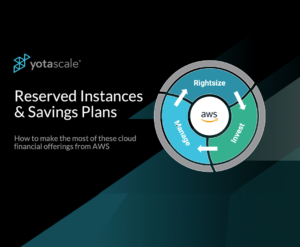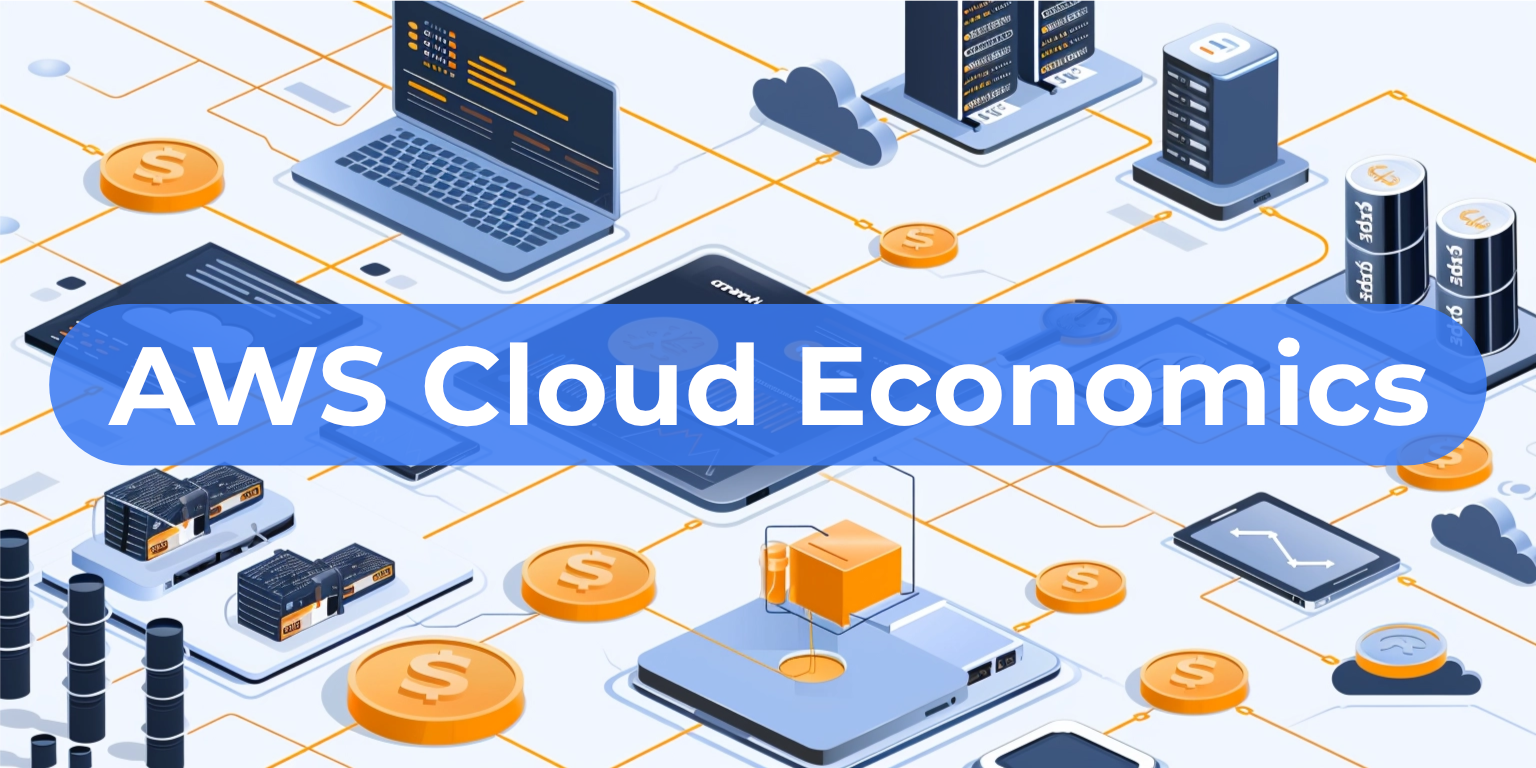AWS’s many services suit most businesses, no matter the requirements or size of the organization. As these services help companies scale, whether we’re talking about short-term compute capacity or long-term storage services, developers and organizations worry about managing the rising costs.
To address this challenge, Amazon Web Services (AWS) has evolved its savings opportunities to assist businesses. Reserved Instances and Savings Plans are the most well-known options to quickly reduce your cloud bill without needing to make any changes to your infrastructure.
This article will first build an understanding of both models, their pros and cons, and their challenges. We’ll then extend our discussion to find a solution to these challenges. And we’ll compare the two plans to identify which option maximizes cost efficiencies in specific scenarios.
Watch the webinar: Introduction to AWS Reserved Instances & Savings Plans →
What are AWS Reserved Instances?
Compared to classic on-demand computing prices, Reserved Instances (RIs) assist businesses by providing a significant discount in exchange for a commitment to a specified usage level over a period of time. AWS’s variety of options includes a Standard or Convertible RI with a commitment of one or three years. Different types of RIs offer a discount according to payment policy (full payment, partial payment, or monthly payment) and provide the following discounts:
-
Regional and zonal benefits: This type of discount applies to RIs across the region in all availability zones.
-
Convertible Reserved Instances: You can exchange one or more Convertible RIs for another Convertible RI with a different configuration, including instance family, operating system, and tenancy.
-
Instance size flexibility: The savings apply to any size of compute instance within a family.
Understanding the differences between RIs can help businesses determine which RIs to take advantage of and help manage their cloud spend, but there are some challenges to AWS RIs. Although AWS RIs offer some flexibility and elasticity, they limit you to a fixed-price resource over time.
Amazon permits the resale of unused RIs on AWS Marketplace, while also offering convertible reserved instances which are adjustable in availability zones, instance size, network type, and more. However, these changes can be complex and not necessarily ideal, they must be manually managed to ensure optimal usage of purchases and exchanges.
What are AWS Savings Plans?
To address the challenges with RIs, AWS announced a new discount program called Savings Plans. It offers the flexibility and elasticity of its resources while guaranteeing lower prices and for longer commitments. Savings Plan users enjoy significant savings on their on-demand Amazon Elastic Compute Cloud (EC2) and Fargate committed usage for a one- or three-year period.
There are two types of Savings Plans offered by AWS:
-
EC2 Instance Savings Plans – EC2 Instance Savings Plans only apply to a specific instance family in a given region, but provide up to a 72 percent discount. Note that the plan covers use of all instance types within the same specified region, regardless of their size.
-
Compute Savings Plans – Compute savings plans are the most flexible and reduce your cost up to 66 percent. They automatically apply to any EC2 instance usage regardless of operating system, family, region, and other factors. For example, you can easily migrate from EC2 to Lambda without affecting your AWS Savings Plan’s price or coverage.
Now that we have some basic understanding of both Reserved Instances and Savings Plans, we’re in a good position to highlight their differences. Both pricing models come with their pros and cons, depending on the situation.
Advantages of Savings Plans
Flexibility: Reserved Instances only apply to the region they were purchased in and cannot be changed, but with Savings Plans, you can switch regions, retaining their benefits and giving you greater flexibility.
Automated coverage: One of the key features of Savings Plans is automated coverage. The plan automatically adapts itself to any changes in the instance, offering you self-activated coverage. Comparatively, Reserved Instances need continuous monitoring to ensure they are always applied.
Savings for serverless: AWS Savings Plans offer discounts on EC2 as well as Fargate, enabling you to make the most of your serverless containers.
Less management overhead: Although AWS users can sell unused RIs or exchange Convertible RIs, that comes with management overhead and purchasing complexity. On the other hand, Savings Plans offer higher flexibility with no unnecessary purchasing complexity, making them a better option.
Advantages of AWS Reserved Instances
Capacity reservation: Reserved Instances ensure that compute capacity is available within a specific availability zone, which is useful for use cases such as DR sites. This capability isn’t available with Savings Plans. That said, users can set On-Demand Capacity Reservations with a savings plan discount, giving more flexibility for deploying DR on-demand.
Higher discounts: AWS Reserved Instances offer larger discounts, over 60 percent in most cases with a three-year upfront payment.
Broader coverage: AWS RIs offer discounts on Amazon Relational Database Service (RDS) as well as EC2 instances whereas Savings Plans cannot be applied to RDS.
How to Choose a Pricing Model
Although Savings Plans offer significant advantages over Reserved Instances, there are certain areas where Reserved Instances do what Savings Plans fail to achieve.
For example, users can sell RIs they are no longer using on AWS Marketplace, but that’s not the case with Savings Plans. The user must continue to pay for the Savings Plans throughout the specified term, regardless of actual usage. This might be one reason why some businesses hesitate to migrate to Savings Plans.
Even if you choose Savings Plans, there are still many considerations. For example, should you choose a one-year or three-year term? What amount should you commit per month? What if you still need guaranteed capacity?
Regardless of cloud cost pricing option choice, fully-optimized cloud expenditure isn’t guaranteed and users might suffer from decision paralysis, especially when it comes to large-scale, complex deployment requiring diligent planning and analysis by DevOps and finance teams. Most commonly, organizations end up investing a huge amount of human resources just planning for RIs and Savings Plans.
Consider a typical scenario for any project plan. At first, the development teams or engineers estimate the required compute resources for any new project. The IT Operations or DevOps teams then review this estimate to confirm the required computing resources. Finally, the finance team reviews and confirms that the recommended reserved resources will truly deliver a positive ROI.
The whole process becomes cumbersome, involving spreadsheets, tedious reviews of historical cloud data usage, and complex expected compute capacity projections. This often uncovers an additional 20 to 40 percent cost over the adopted method, not to mention the probability of human error at each stage.
Let’s be reasonable. We’re not living in the early ages of computing, so we shouldn’t have to deal with manual analysis. We need a modern-age solution to monitor and optimize our cloud usage.
For additional details on Reserved Instances and Savings Plans, watch the on-demand webinar:
Introducing Yotascale
Yotascale uses machine learning (ML) and statistical analysis to continuously monitor your environment and make budgeting and forecast recommendations, including Reserved Instance and Savings Plan considerations. No need to export reports for slicing and dicing. Savings recommendations are delivered right to the people most qualified to take action.
Yotascale identifies owners of orphaned resources so a business can decide if those resources are still needed as their costs add up. Yotascale ensures maximum resource optimization and use with minimum financial lock-in.
Summing it up, cost allocation, visibility, planning, and optimization are key features of Yotascale’s software, enabling an effective cost management strategy. Enterprises like yours deploy Yotascale software to bridge the gap between CloudOps, engineering, and finance teams, fulfilling fiscal responsibility while taking advantage of cloud’s agility.
Next Steps
Cloud flexibility enables companies to scale quickly but it can be challenging to keep these rising costs in check. We looked at Amazon’s solutions to this challenge, Reserved Instances and Savings Plans, and weighed the pros and cons of each. Although Savings Plans are often a better choice than Reserved Instances, there are situations where RIs make more sense.
Deciding which option is better for your organization may be complex, but Yotascale does the heavy lifting for you. Our AI automatically recommends the best way for you to save, and sends that information to the people who need to know, so you can implement these changes and scale back your rising cloud costs even as your company scales up.
To discover how Yotascale’s intelligent plans help lower your cloud costs, request a demo today.
Last updated October 23, 2022


